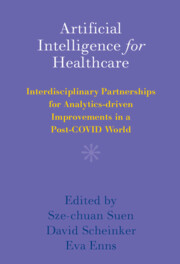A model of a birthdate distribution for a herd of beef cows is constructed using the probability distributions of the variables that affect reproduction in the cow — anoestrous interval, oestrous cycle length, conception to each oestrus, gestation length, period of mating and the prior calving frequency distribution. The model is general and can be reparamaterized to deal with issues such as intervention to synchronize oestrous cycles among cows in the herd by changing the form of the relevant probability distributions.
The model is applied to the question of what time to begin mating in a herd of beef cows. The average calf live weight at day 200, herd conception rate and proportion of cows calving before the planned start of calving were calculated from the model output. The model parameters given by the anoestrous period, conception rate to each oestrus and the regression between prior calving date and anoestrous period, were varied in a factorial design to investigate a range of circumstances found on a farm. Prior calving distributions were generated by random sampling from eight actual calving frequency distributions.
Generally starling mating earlier produced an advantage in terms of extra calf live weight and herd conception rate. However, the proportion of the herd calving earlier than expected increased with early mating. Thus, the feasibility of early mating depends on the cost to the farmer of dealing with early calving cows as well as the advantage of heavier older calves.
Altering the fixed parameters in the model (variances and covariances, prior calving distributions, mating period) to accommodate the circumstances of herds run under different conditions may produce different results. Model structure allows easy alteration of these parameters and also the introduction of different probability distributions for some variables. This might be necessary to model oestrous synchronization and artificial insemination, issues not considered in this paper.
